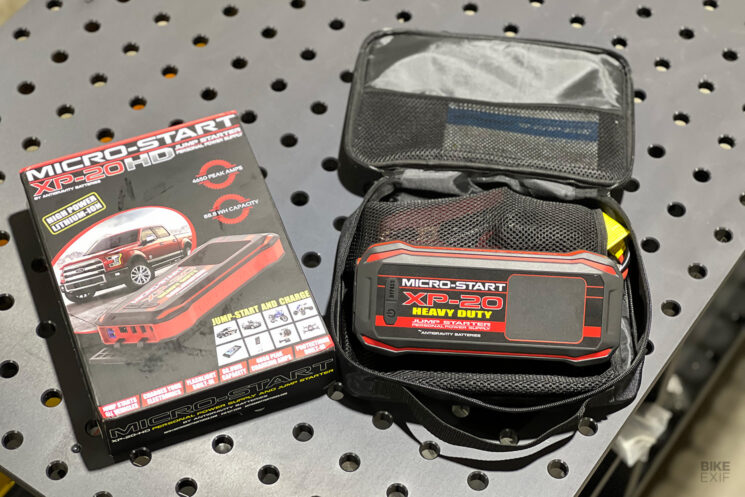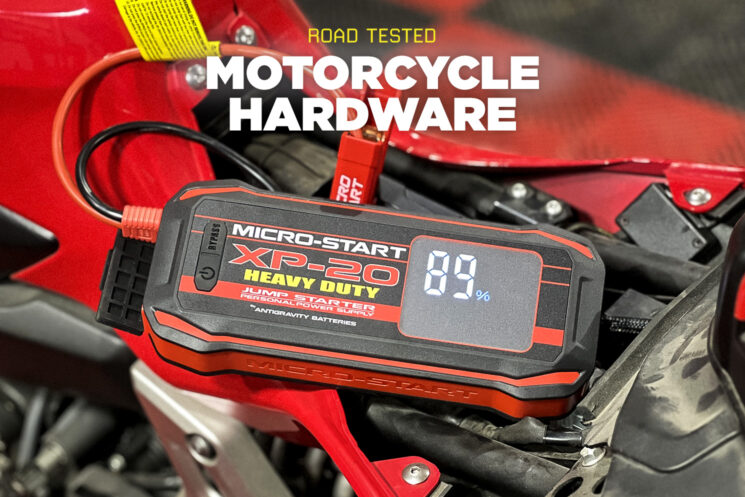
Like your brake fluid and inner tubes, the battery on your motorcycle is one of those things you don’t think about until it’s too late. Considering less and less of us are blessed with a kick starter these days, a battery that’s past its prime, or leaving an ignition on for a few hours can really put you in a tight spot. We recently had the opportunity to test out Antigravity Batteries new Micro-Start XP-20-HD jump pack, and since we’re coming out of a long winter in the midwest, there was no shortage of dead batteries around.
To get some quick specs on paper, the XP-20-HD is Antigravity’s most powerful lithium jump pack to date, offering 930 starting Amps and 4,650 peak Amps. It’s compact at 9.5” by 4,” and includes a whole host of convenient features like a 240-Lumen LED flashlight, USB-A and USB-C output, dead battery bypass, etc.

The XP-20 feels really well built and has a nice display, and it’s really simple to use with just two buttons and full instructions on the back. It’s really a pretty compact and handy system for charging electronics and jump-starting vehicles, but that’s all information you can find on the web, let’s get out in the real world and apply some voltage.
While I was tempted to hook this thing up to my diesel pickup right away, this is Bike EXIF, so I did my due diligence analyzing the XP-20-HD for two-wheeled purposes first. So let’s talk logistics. Again, this thing is pretty compact, and stores away nicely with all its accessories in the included carry case. You wouldn’t have a problem stashing it in a saddle bag or backpack, and the ability to charge your electronics could make it worthwhile to do so—even if you don’t need the jumpers. In my experience, it charged up quickly and didn’t lose a whole lot of battery life sitting around, even when I left it in my 40-degree garage over the weekend.

It’s worth stating that the XP-20 and XP-20-HD come with beefier jump-start clamps, which aren’t as convenient in the tight quarters your motorcycle battery resides in. For this, the smaller clamps of the XP-10 would be a better fit, but that being said, I didn’t encounter a battery where I couldn’t make the XP-20 work. And I certainly tried.
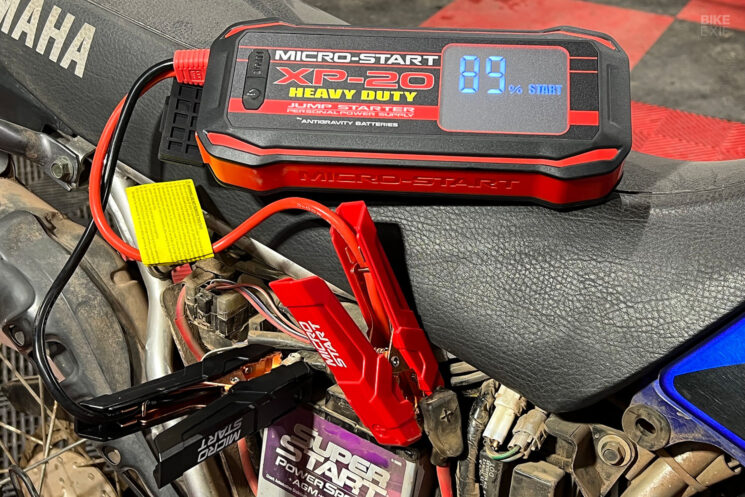
For the first round of testing, I hooked the jump pack up to an older TW 200 and XT 250, both with tired, but still serviceable batteries. While these old Yamahas are notoriously hard starting in the spring, the XP-20 provided plenty of juice for extended cranking to fire them up. Next was a Polaris Sportsman four-wheeler, which required hitting the ‘bypass’ button, allowing the unit to send juice to a completely dead battery. Again, the engine fired up easily. Several other bikes yielded the same results without diminishing battery life, most significantly a 40-year-old Harley Shovelhead with a battery that had tested 0.9 Volts.
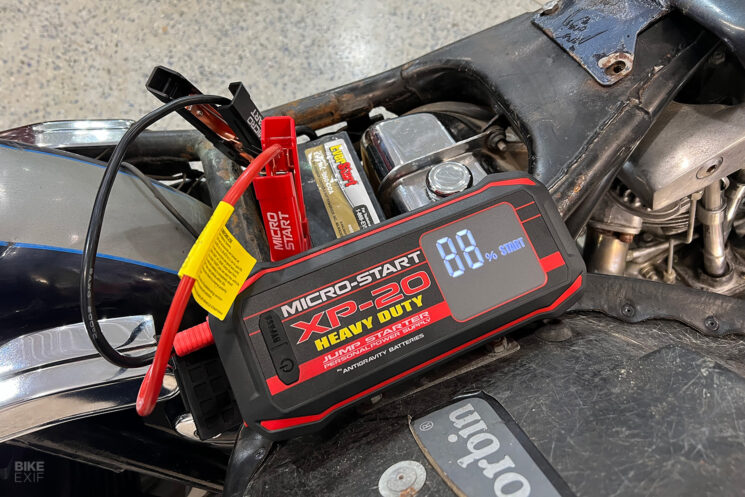
So clearly, you could do this sort of thing over and over again, even without a full charge, as most of the bikes I tested it on didn’t decrease the battery life by a single percent. It’s the same story charging your electronics as well, and topping my phone off from 70% battery only dropped the pack’s battery by 2%. But to really see what the XP-20 HD could do, I had more than my fair share of weak car batteries at my disposal.
The XP-20 HD has more than enough juice to start cars and trucks with serviceable batteries, and it won’t lose more than 5 to 10% of its battery life with extended cranking. You have to remember that it’s a jump starter, not a battery charger though. The instructions let you know to disconnect the jump pack within 30 seconds of starting the battery, and if your battery is stone-dead, this might not be long enough to keep it running. The internal temperature sensor is also in place for safety, and if you try to jump a dead battery more than one or two times within 10 minutes, it can prevent you from jumping again until it cools. I suppose that’s better than an exploded jump pack, though—ask me how I know.
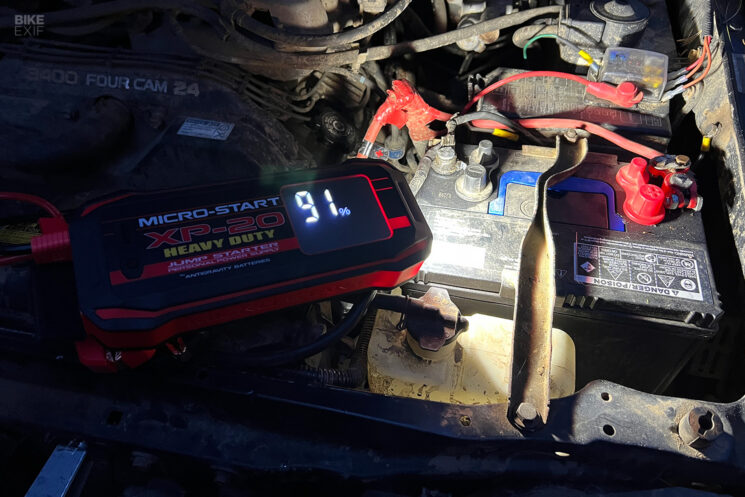
This was my experience with an older Audi and Toyota 4Runner that had been sitting all winter. The Audi’s battery wasn’t completely dead, and the jump pack boosted it to life easily, but the 4Runner was a bit too far gone. A quick trickle charge brought that battery back from the grave, and the Micro-Start gave it enough juice to crank normally. And that really speaks to what a unit like this is designed for. It’s there to give you a boost in a slow cranking situation, not to replace the vehicle’s battery altogether.
I do have to award points for the built-in reverse polarity protection, which saved me from reverse zapping the 4Runner while in the dark. The built-in flashlight helped prevent that mistake going forward, and I have to say, that’s an incredibly handy feature when you’re continuously jumping batteries in the dark. Which always seems to be the case in my experience.
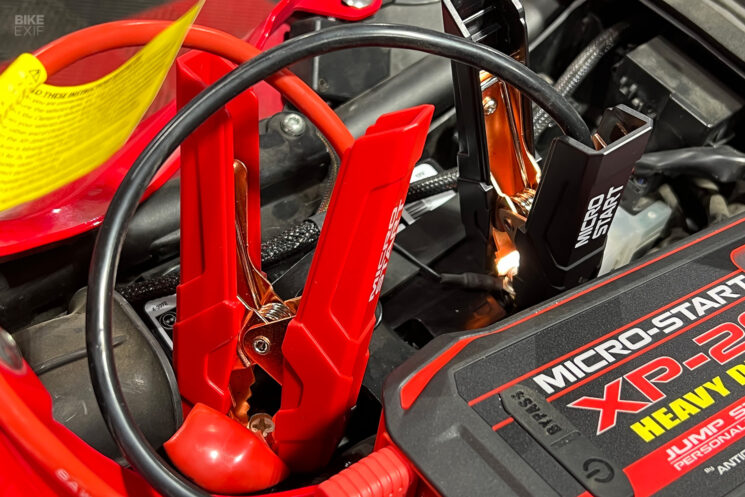
Bringing this thing to a conclusion, I was very pleased with the Micro-Start, and it’s definitely become a standard item in my road trip tool kit. The XP-20-HD kit sells for $249.99, complete with all the jumper cables, charging cords, etc. And if you think that’s too expensive, think about the last time you were stuck in the middle of nowhere after dark with a dead battery. Bet it sounds like cheap insurance now!
